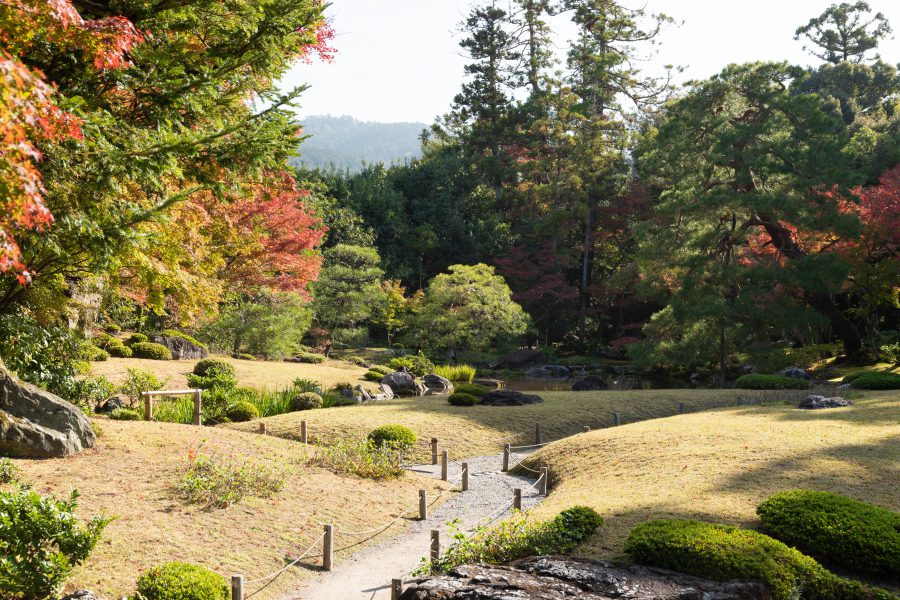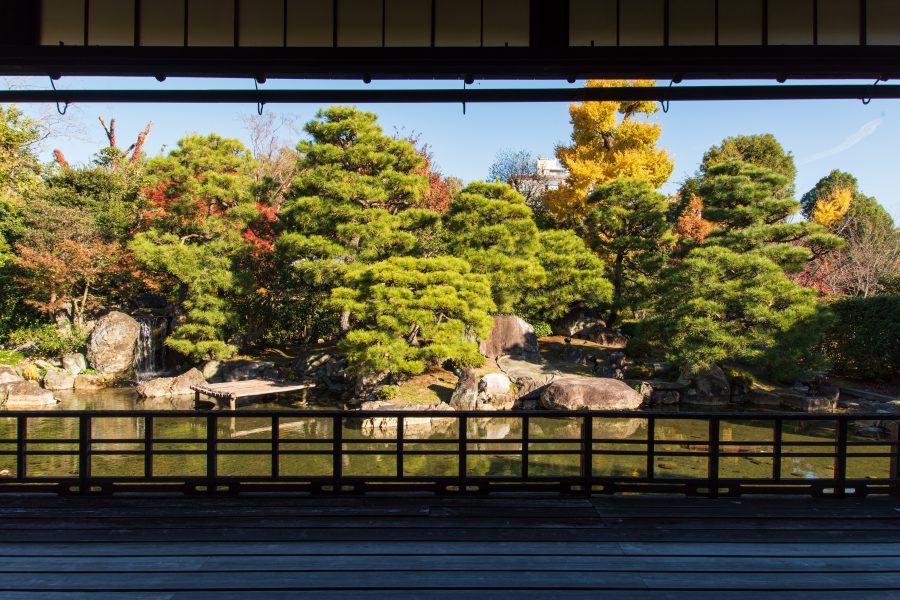Garden Knowing/
keywords
Tsukiyama: The Artificial Hill
 Murin-an’s artificial hills flank both side of its garden path, resulting in a landscape that remains consistently naturalist, regardless of what direction it is enjoyed from.
Murin-an’s artificial hills flank both side of its garden path, resulting in a landscape that remains consistently naturalist, regardless of what direction it is enjoyed from.
Tsukiyama: The Artificial Hill
“When building a mountain or placing a meadow mound (nosuji), one must follow the landscape and the shape of the pond.” So said the Sakuteiki (Records of Garden Creation), Japan’s late eleventh-century garden creation manual. It is a simple commandment encapsulating the connection in Japanese gardening tradition between creating artificial hills and paying homage to the natural landscape. In 1735, the Tsukiyama teizō-den (Constructing Mountains and Making Gardens) instructed readers first “to pay close attention to the landscape” and then emulate their preferred scenery by “building an artificial mountain and pond in accordance with the garden’s size.” Separated by nearly seven centuries, these two quotations perhaps give us a sense of the tremendous creative energy that Japanese gardens have invested in the artificial hillscape.
Why do Japanese gardens so often feature artificial hills? The most straightforward answer is that they add slope and depth to the landscape, thereby revealing new possibilities hidden within it. Yet on closer inspection, we find that the artificial hill’s significance has been fundamentally reinterpreted in each age. In the ancient Nara capital, it appears as a stone arrangement that may have been a metaphor for an otherworldly paradise (horaijima); a reflection perhaps of its Chinese and Korean origins. After imperial Kyoto’s founding, however, earth dug up for pond gardens at noble residences was used to create hills representing natural mountain scenery, a new direction for the artificial hill that likely contributed to its widespread popularization. The pondless dry landscape garden (karesansui) used the artificial hill symbolically by placing stone arrangements on it and sometimes even replacing soil mounds with stone hills. With the surge in the strolling pond garden’s popularity during the Edo period (1603-1868), artificial hills were once again used to suggest natural mountain scenery. Now, however, they facilitated plentiful scenic transitions and allusions to faraway places. Indeed, perhaps the most adventurous episode in the artificial hill’s long history is the widespread attempt by daimyo lords and well-to-do commoners to create their very own miniature replicas of Mt. Fuji.
From the Egyptian pyramids to Disneyland, the desire to create mountains is so widespread across human history it is tempting to see in it a motif that, if not completely universal, can at least be called deeply primordial. As Japanese gardens continue to globalize in the twenty-first century, it may well be that the most interesting chapters in the artificial hill’s history have yet to be written.
 At Shosei-en, an artificial hill with a dynamic waterfall is placed directly in front of the Rinchi-tei Reception Hall.
At Shosei-en, an artificial hill with a dynamic waterfall is placed directly in front of the Rinchi-tei Reception Hall. 